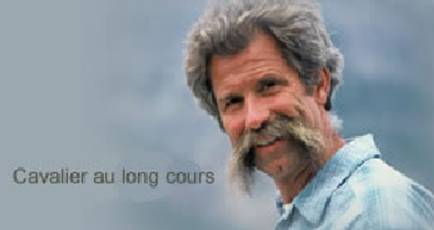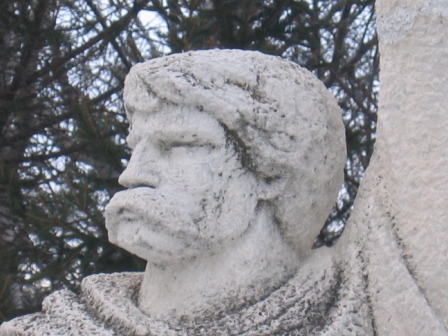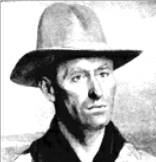|
If Tschifelly was the
grandfather of modern (post - internal combustion engine) big rides,
then Émile Brager
is the friendly, if slightly eccentric, uncle. It is said that
'when
 the
student is ready, the master appears.' Émile appeared to us -
firstly through the pages of 'Cheval Loisirs' magazine - as the
wildly moustached but infinitely experienced guru of big, adventurous rides.
Despite his 'grand fromage' status, Émile was making the effort to
share with us mortals his vast practical knowledge of equine
voyaging, knowledge gained in part from his mammoth four year trip
(with partner Marie Roesle) from the Magellan Straits in Patagonia
to Fairbanks in Alaska. the
student is ready, the master appears.' Émile appeared to us -
firstly through the pages of 'Cheval Loisirs' magazine - as the
wildly moustached but infinitely experienced guru of big, adventurous rides.
Despite his 'grand fromage' status, Émile was making the effort to
share with us mortals his vast practical knowledge of equine
voyaging, knowledge gained in part from his mammoth four year trip
(with partner Marie Roesle) from the Magellan Straits in Patagonia
to Fairbanks in Alaska.
We bought
Émile's bible: 'Techniques du voyage a cheval' and tried to absorb
the pearls of wisdom. What to do
if you lose a glove in the winter? Kill a rabbit, cut a hole big
enough to get your hand in, scrape out the insides et voila: a furry
mitt! How to prepare yourself for having to eat the strange foods offered by your
hosts? Practice before you leave home by eating snake, rat, mouse
and gerbil from your local pet shop. Despite these occasional
eccentricities, for us his advice was like gold nuggets and his
passion and enthusiasm was fuel to the fire of ours. A long journey
with horses, he wrote, is “to blow a kiss at life.”
prepare yourself for having to eat the strange foods offered by your
hosts? Practice before you leave home by eating snake, rat, mouse
and gerbil from your local pet shop. Despite these occasional
eccentricities, for us his advice was like gold nuggets and his
passion and enthusiasm was fuel to the fire of ours. A long journey
with horses, he wrote, is “to blow a kiss at life.”
In 1981 Émile (together with
other legendary French rider
Stéphane Bigo and others) set up
Les Cavaliers au long
cours. The aim was to share experiences and help others
turn their dreams into reality. These men and women have been
deeply affected by their big adventures and their passion is plain
to see. Their message seems to be this: go out and do a long
tough trip, put the effort in and you will be rewarded by
experiencing a particularly delicious slice of the gateau of life.

Technically, the 'cavaliers au
long cours' are those who have accomplished a journey by horse:
- without any following assistance, i.e. a back-up vehicle;
- for at least six consecutive months;
- with the same team of horses;
- for at least 5,000km, and;
- in at least one country other than their own.
This may be the top level, but the 'Cavaliers au long cours'
magazine is full of stories of people just setting off from their
homes and riding over the horizon, enjoying the landscape, the
hospitality of strangers, and the precious gift of time spent with their
horses.
|
 Numero
uno on the inspiration front, the head honcho in a poncho, is
Aimée Tschiffelly, the Swiss rider who rode 10,000 miles from
Buenos Aires to New York in the 1920s. The story
Numero
uno on the inspiration front, the head honcho in a poncho, is
Aimée Tschiffelly, the Swiss rider who rode 10,000 miles from
Buenos Aires to New York in the 1920s. The story
 of
the epic adventure, with his two Criollo horses, Mancho and Gato, is
told in his classic book: '
of
the epic adventure, with his two Criollo horses, Mancho and Gato, is
told in his classic book: '

